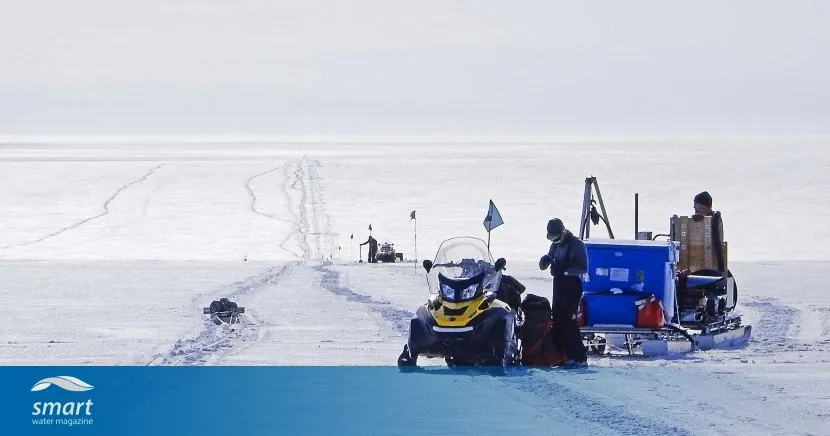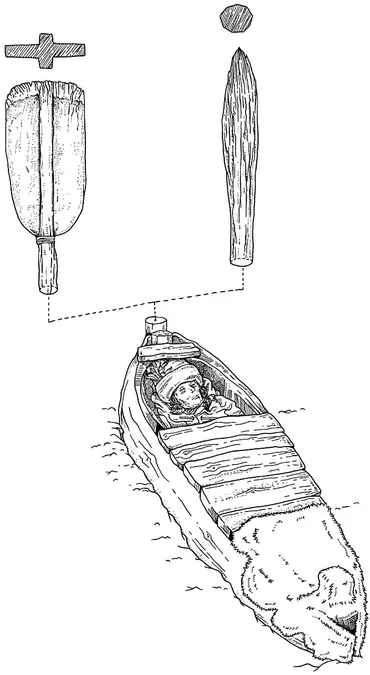
Unlocking Antarctica's Hidden Water Mystery: How Flooding Fuels Ice Melt
2025-05-14
Author: John Tan
Beneath the colossal expanses of Antarctic ice lies a hidden world—a maze of lakes and rivers that could hold the key to understanding alarming ice melt patterns. A pioneering study from ETH Zurich researchers has revealed the intricate dynamics of these subglacial streams in West Antarctica, illustrating the profound impact of flooding on ice degradation.
In late 2021, an international expedition set off from New Zealand towards the Ross Ice Shelf—a floating ice mass larger than Switzerland. After two weeks crossing the vast Antarctic landscape, they arrived at the Kamb Ice Stream, a massive glacier stretching 350 kilometers long and 100 kilometers wide.
Once there, the team established a temporary research base, complete with an airstrip, ready for intense summer conditions that see temperatures plummet to -10°C with constant daylight. Their mission? To drill 500 meters through ancient ice and uncover the secrets of the Antarctic mainland beneath.
Using hot water drilling techniques, the team discovered a vast underground water system and even spotted surprising marine life—lobster-like creatures located 400 kilometers away from open seas. This monumental borehole represents the first direct glimpse into how water flows beneath the ice, confirming long-held scientific suspicions.
Researchers had long theorized the presence of subglacial water due to geothermal heat and have identified hundreds of lakes beneath the ice caps through satellite imagery. However, comprehending the watercourses’ behavior remains a daunting challenge.
The conduits were not the furious torrents one might envision; instead, they are relatively calm flows, primarily containing seawater, with only a trickle of fresh water from the interior. Alarmingly, this fresh water flow was significantly less than prior models had predicted. The key insight? The water doesn't flow steadily—it ebbs and flows, influenced by the filling and draining cycles of subglacial lakes, leading to significant floods approximately every decade.
These findings are crucial in understanding the melting dynamics of the Antarctic ice shelf. With rising global temperatures, the melting processes of the Ross Ice Shelf and other ice formations pose a serious threat to sea levels worldwide. "Our research highlights the pivotal role of subglacial watercourses in ice shelf melt, informing more accurate models for predicting sea level rise," says expedition leader Huw Horgan.
The implications of this groundbreaking research extend far beyond the icy reaches of Antarctica. As climate change accelerates, Horgan and his team plan to return in the 2025/2026 season to gather long-term data on ice behavior, especially during warmer periods. The mysteries hidden beneath the Antarctic ice could very well determine the future of global sea levels.



 Brasil (PT)
Brasil (PT)
 Canada (EN)
Canada (EN)
 Chile (ES)
Chile (ES)
 Česko (CS)
Česko (CS)
 대한민국 (KO)
대한민국 (KO)
 España (ES)
España (ES)
 France (FR)
France (FR)
 Hong Kong (EN)
Hong Kong (EN)
 Italia (IT)
Italia (IT)
 日本 (JA)
日本 (JA)
 Magyarország (HU)
Magyarország (HU)
 Norge (NO)
Norge (NO)
 Polska (PL)
Polska (PL)
 Schweiz (DE)
Schweiz (DE)
 Singapore (EN)
Singapore (EN)
 Sverige (SV)
Sverige (SV)
 Suomi (FI)
Suomi (FI)
 Türkiye (TR)
Türkiye (TR)
 الإمارات العربية المتحدة (AR)
الإمارات العربية المتحدة (AR)